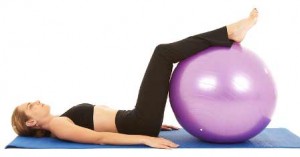
How to Avoid Your Uterine Prolapse Symptoms Worsening
Are uterine prolapse symptoms bothering you? This Physical Therapist information teaches you how to recognise common uterine prolapse symptoms and simple ways to avoid prolapse

Are uterine prolapse symptoms bothering you? This Physical Therapist information teaches you how to recognise common uterine prolapse symptoms and simple ways to avoid prolapse

Are Curves gym exercises safe with a prolapse? Do you want to exercise at Curves and protect your pelvic floor? Many women ask about the

Ab workouts for women are not all the same when it comes to managing prolapse problems! Some popular abdominal exercises increase the risk of pelvic

Are you looking for safe core exercises to tone your tummy? Do you feel confused about how to strengthen your core and avoid prolapse worsening?

Are you trying to avoid pelvic prolapse surgery? Would you like to reverse your prolapse? This Physiotherapy prolapse information teaches you about: How to improve

Are you unsure about choosing the best exercise for weight loss with prolapse or after prolapse surgery? Weight loss exercise with prolapse issues is often

Are you trying to exercise with prolapse problems? Do you worry that your exercises might cause repeat prolapse after prolapse surgery? Unfortunately many commonplace exercises

These prolapse symptoms give you very useful information about whether your exercises may be overloading your pelvic floor. If you’ve had prolapse surgery this information

Uterine prolapse after childbirth usually comes as a shock and great disappointment to the unsuspecting new mum. When the initial shock of a prolapse diagnosis

Prolapse after childbirth is a confronting and challenging problem for new mums. Women of childbearing age are usually shocked to learn of their prolapse after

Your prolapse surgery recovery can be improved by knowing these simple prolapse surgery exercises and techniques. This article provides you with Physiotherapy exercises for prolapse

What is a pelvic prolapse? A pelvic prolapse is like a hernia in the vagina where supporting tissues in the pelvis are unable to retain

How to choose the best pelvic prolapse exercises for staying in shape and maintaining your fitness? Sometimes it’s really difficult to get a clear straightforward

Pelvic exercises prolapse strength training techniques can improve prolapse support and reducing prolapse symptoms. These pelvic exercises prolapse techniques are designed to: strengthen your pelvic floor

Are you sick and tired to of constipation and prolapse problems? Constipation and prolapse is often the result of a cycle of straining, incomplete emptying and

Pelvic Floor Physiotherapy Prolapse Exercise Guide These prolapse exercise guidelines help you strengthen your prolapse support and alleviate prolapse symptoms. Read on now to learn

Prolapse and exercise-related worsening of prolapse can be avoided. How do you choose safe exercises, manage your weight and maintain your fitness if you’ve been

Prolapse and running Physiotherapist information teaches you how to run with a prolapse and reduce the risk of prolapse worsening. This video guides you through:

Are you worried about your prolapse symptoms? Prolapse symptoms can vary from one woman to the next, often depending on the type and severity of

Pelvic organ prolapse self management involves prolapse exercises and ongoing prolapse protection strategies. Read on to learn the health professional answers and techniques for these

Prolapse and sex is usually a taboo subject causing anxiety and shame for some women. Learn what your partner notices and how to improve intimacy with prolapse issues.

This video demonstrates how to correctly activate and exercise the deep core abdominal muscles with a series of floor-based exercises.
This video is ideal for women seeking information on abdominal exercises that minimise pressure on the pelvic floor and who have:
pelvic floor weakness,prolapse including uterine prolapse, bladder prolapse and rectal prolapse and those who have had past pelvic surgery including after a hysterectomy and after prolapse surgery (of course only for when the treating doctor’s approval to exercise is given).

Unfortunately for many women the potential forpelvic floor injury with intense core exercise is not well recognised within fitness circles. After prolapse surgery, some women even get the go-ahead to return to their regular gym exercises with little understanding of the potential risk of recurrent prolapse with the wrong kind of abdominal core exercise.

Once diagnosed with a prolapse (bladder prolapse, rectal prolapse or uterine prolapse) most women want to know how to protect their prolapse and stop it getting any worse.

Learning that you have a uterine prolapse can be distressing and quite a shock for some women. Women very often want and need to know how to manage their prolapsed uterus and avoid making it worse. After prolapse repair surgery women are usually very eager to learn how to avoid having a repeat prolapse. Women commonly ask the following questions about managing their uterine prolapse …

Many women are fortunately becoming aware that inappropriate strength training (or resistance training) has the potential to strain and injure their pelvic floor. Performing strength exercises using the wrong technique can increase your risk of incontinence and contribute to or worsen your pelvic organ prolapse (uterine prolapse, bladder prolapse and bowel prolapse).

There are a number of key steps you can take to avoid recurrent pelvic organ prolapse, and this includes after vaginal surgery for uterine prolapse, prolapsed bladder (cytocoele) and bowel prolapse (rectocoele). The same protective principles apply to women after rectal prolapse surgery. This 6 minute video outlines the short and long-term practical strategies you can use to reduce your risk of repeat prolapse and further pelvic sugery.

Get set to learn some of the most effective fitness exercises for protecting your pelvic prolapse. This information applies to women with; uterine prolapse, prolapsed bladder (cyctocoele), rectal prolapse (rectocoele) and also after prolapse surgery (when you have your specialist’s approval to commence general fitness exercise).

Learn how to protect your prolapse and reduce your prolapse symptoms in 5 minutes! This video is ideal for women suffering vaginal prolapse, rectal prolapse or uterine prolapse symptoms.

Safe Abdominal Exercises for Women Safe abdominal exercises are a must for women with or at risk of pelvic floor problems. This Pelvic Floor Physiotherapist
© 2009-2024 Pelvic Exercises